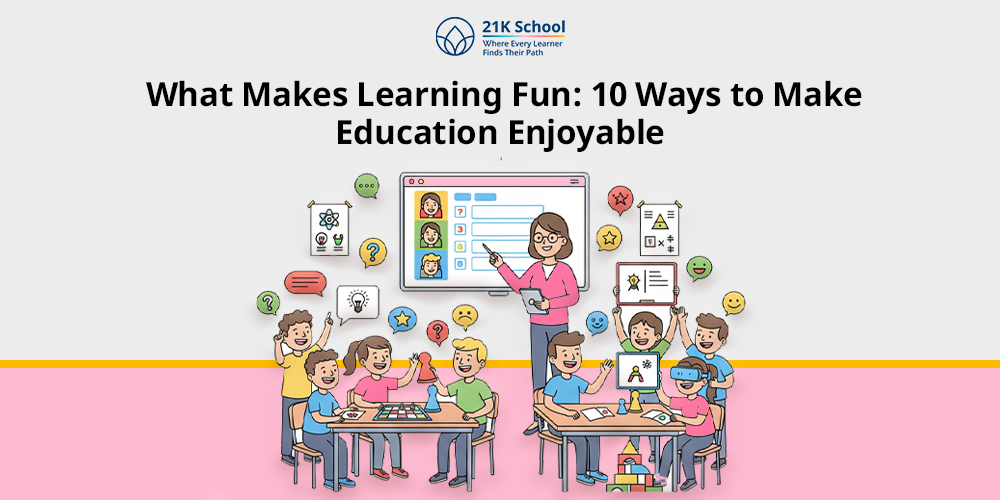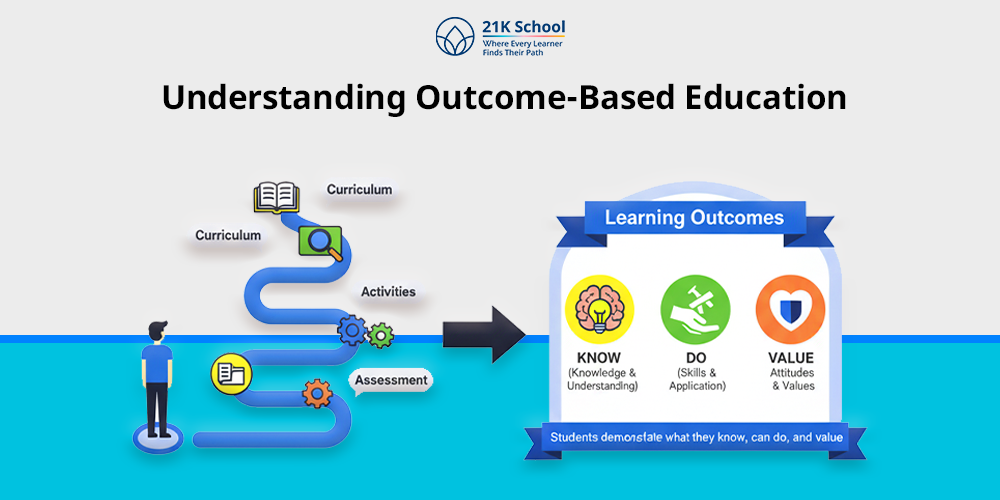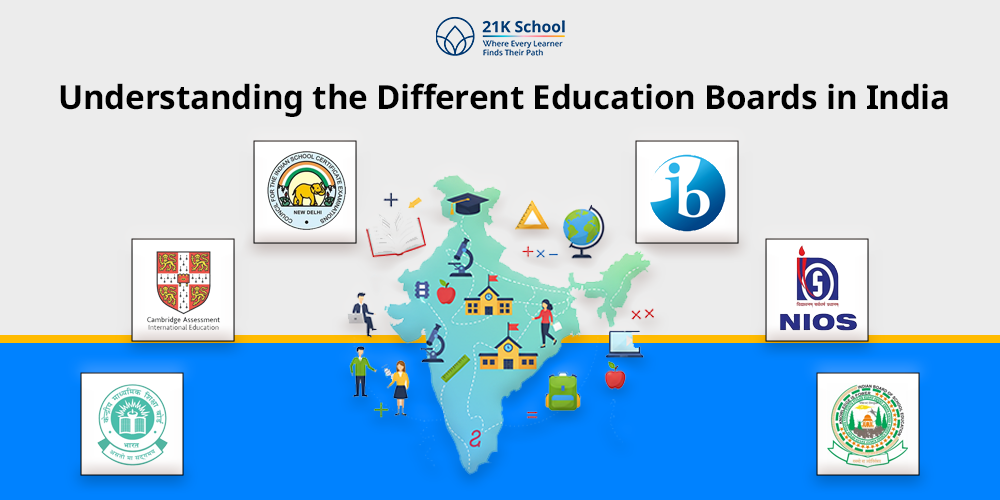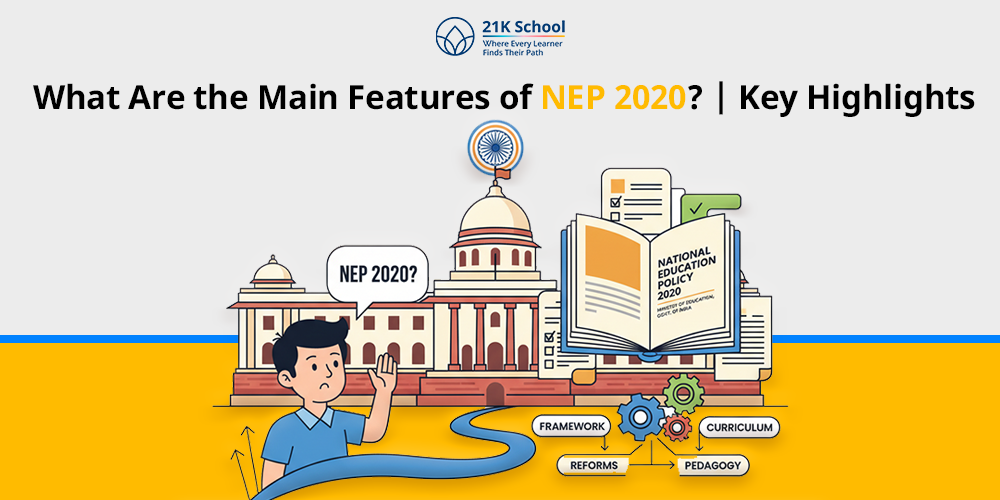
You may be one who believes that, because your kids will enjoy it, they may be spoiled and fail to learn as they should.
But is that really true? It can not be that bad to make learning a fun activity.
Surprisingly, the moment we provide some fun in learning for the young children, they feel motivated to grasp the concepts.
Studies can be fun with fun learning activities, fostering student-engagement.
In this paper, we shall start by knowing the reason why we are attempting to make learning fun, and how we can achieve that.
Table of Contents
- Why is It Important to Make Learning Fun?
- What Makes Learning Fun: 11 Possible Ways
- 1. Interactive Teaching Methods
- 2. Game-Based Learning
- 3. Introduce Friendly Competition
- 4. Hands-on Learning with Field Trips
- 5. Storytelling and Real-life Connections
- 6. Digital Tools and Technology
- 7. Collaborative Learning
- 8. Freedom and Choice
- 9. Positive Supportive Environment
- 10. Movement and Physical Activity
- 11. Creativity and Arts Integration
- Concluding Thoughts
Why is It Important to Make Learning Fun?
Fun activities of learning make the mind and the emotions very active resulting in increased engagement and interaction with the subjects.
The more students enjoy something, the higher are chances that they will be able to remember it, and apply it.
Emotional responses such as curiosity, excitement, and satisfaction are also of a positive nature that promote learning. They are related to greater attention, and cognitive functioning.
Fun learning ways reduce the anxiety level and give confidence especially to learners who dislike the traditional schooling.
In line with this, teachers are advised to make classrooms enjoyable. So that they are able to create an involving and positive learning environment where all students are eager to learn.
What Makes Learning Fun: 11 Possible Ways
Read the following section to explore ways to what makes learning fun:
1. Interactive Teaching Methods
Interactive teaching involves two-way communication between the students and the teachers.
The educators also use problem-solving activities and discussions, so that the learners actively listen to lectures.
The role-play, debates, group experiments, etc. make the lesson more interactive.
This approach makes the learning interesting and understandable, because the students take part in the entire learning process unlike being passive listeners.
2. Game-Based Learning
Game-based learning introduces elements of play that comprises challenges, points, levels, or rewards into the learning practice.
Games arouse the interest of students, develop motivation, and transform learning objectives into missions that should be completed.
Classes that include learning activities foster a healthy competition among learners with apps like the Kahoot!, quiz, or role-plays.
This can foster teamwork, high retention, involvement, and consolidation in return.
3. Introduce Friendly Competition
A healthy competitive setting can offer an interesting approach to learning, and thus better retention of lessons.
When properly applied, it can motivate and facilitate teamwork instead of study stress.
Spelling bees, math races, or group challenges are some of the activities that enable learning to be exciting and goal-oriented.
Good competition prepares the students to put real effort and experience improvement.
4. Hands-on Learning with Field Trips
Hands-on learning can help students to relate theory and practice.
This can be done through field trips or real-world projects to put abstract ideas into practical projects.
Attending a museum, science center, or even going to local businesses are some of the ways which will allow the learners to have something fun to explore.
This sort of experience helps to learn effectively, as students use their emotions, and curiosity togetherly.
5. Storytelling and Real-life Connections
The stories or narratives are emotional and imaginative, therefore they help in remembering information in a very easy way.
The teacher could explain the complex issues in terms of stories, case studies, or even historical events.
When lessons are applied in real life situations, then learning becomes relevant.
As in the case of environmental science being associated with conservation programs in the region or math with budgeting.
Students attach importance, and are therefore truly interested in the subject.
Introduce your children to the pathfinder, 101 stories of grit, growth, and the future of schooling.
6. Digital Tools and Technology
The internet has transformed the learning process.
Interactive whiteboards, video, virtual simulation, and educational apps are online teaching methods that can make the lesson dynamic and accessible.
For example, virtual reality (VR) which could possibly facilitate online field trips, and other multimedia resources which would support different learning styles.
The use of technology makes the students stay active and makes education up-to-date with the digital era they are already living in.
7. Collaborative Learning
Collaborative learning is based on collective problem-solving, communication, effort, and teamwork.
This learning process occurs when the students welcome others’ views as well to complete online group projects or discussions.
Teamwork leads to social interaction and empathy, resulting in more human-centered learning.
It also develops soft skills such as communication skills, negotiation, and leadership, which are needed outside the classroom.
8. Freedom and Choice
By allowing the learner to have a bit of control of what and how they learn, it would be more comfortable to make the learning process enjoyable and motivating.
The students are also allowed to choose the project topics, reading materials, or the presenting techniques of the project.
Choice shall be used to instill a sense of responsibility and self-management skills, to render a rewarding individual-learning.
9. Positive Supportive Environment
A classroom that is filled with positivity is one of the most effective places to create fun learning.
A positive learning environment including support, and respect among students enhances the willingness to take risks, ask questions, and share ideas.
The teachers who exercise positivity, humor, and kindness can make a classroom where a mistake is seen as an opportunity to get better.
10. Movement and Physical Activity
Incorporating movement in lessons maintains the level of energy and improves the concentration.
Both body and mind are stimulated through physical activities like educational games or outdoor lessons.
The benefit of movement-based learning is that younger students use energy in a constructive manner and it enhances memory by engaging the senses.
Momentary breaks including interactive activities could be taken during small breaks to refresh attention and make learning activities exciting.
11. Creativity and Arts Integration
Creativity brings usual teachings to the fantasy world of children.
Subjects involving art, music, or creative writing would help the students communicate using different methods.
Creative learning encourages innovation and creative expressions; thus making learning expressive and entertaining.
Concluding Thoughts
We would be wrong if we say that fun learning interrupts negatively in serious learning. In fact, it is an improvement.
The more the students enjoy learning, the more they get curious. And this enables them to stay motivated.
Learning activities can also be fun, if we could transform the traditional classrooms into places that are interactive and exploratory.
And last, the fun in learning can bring out the love for discovery in a manner that will be of great interest, even after one gets out of the classroom.



